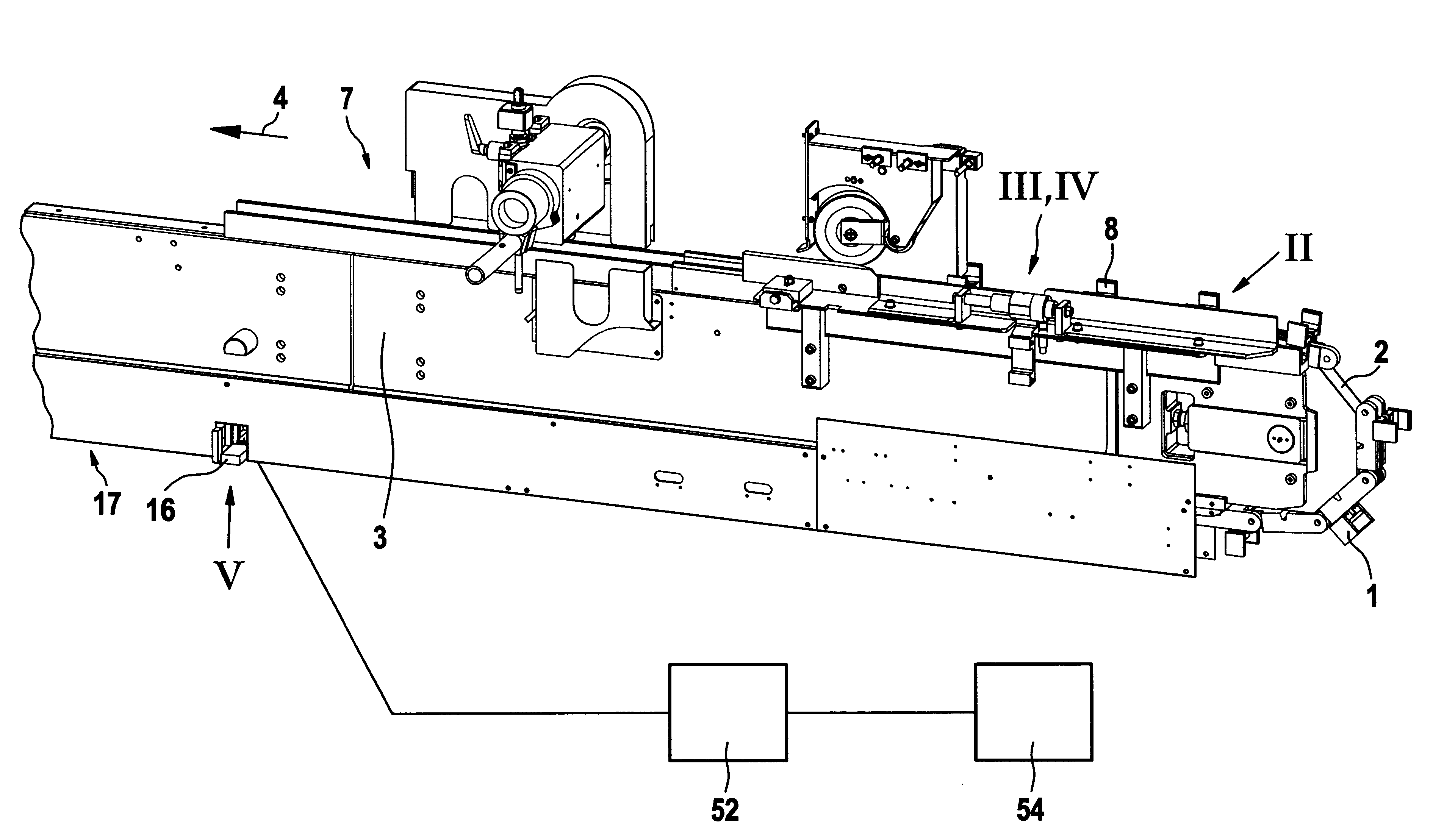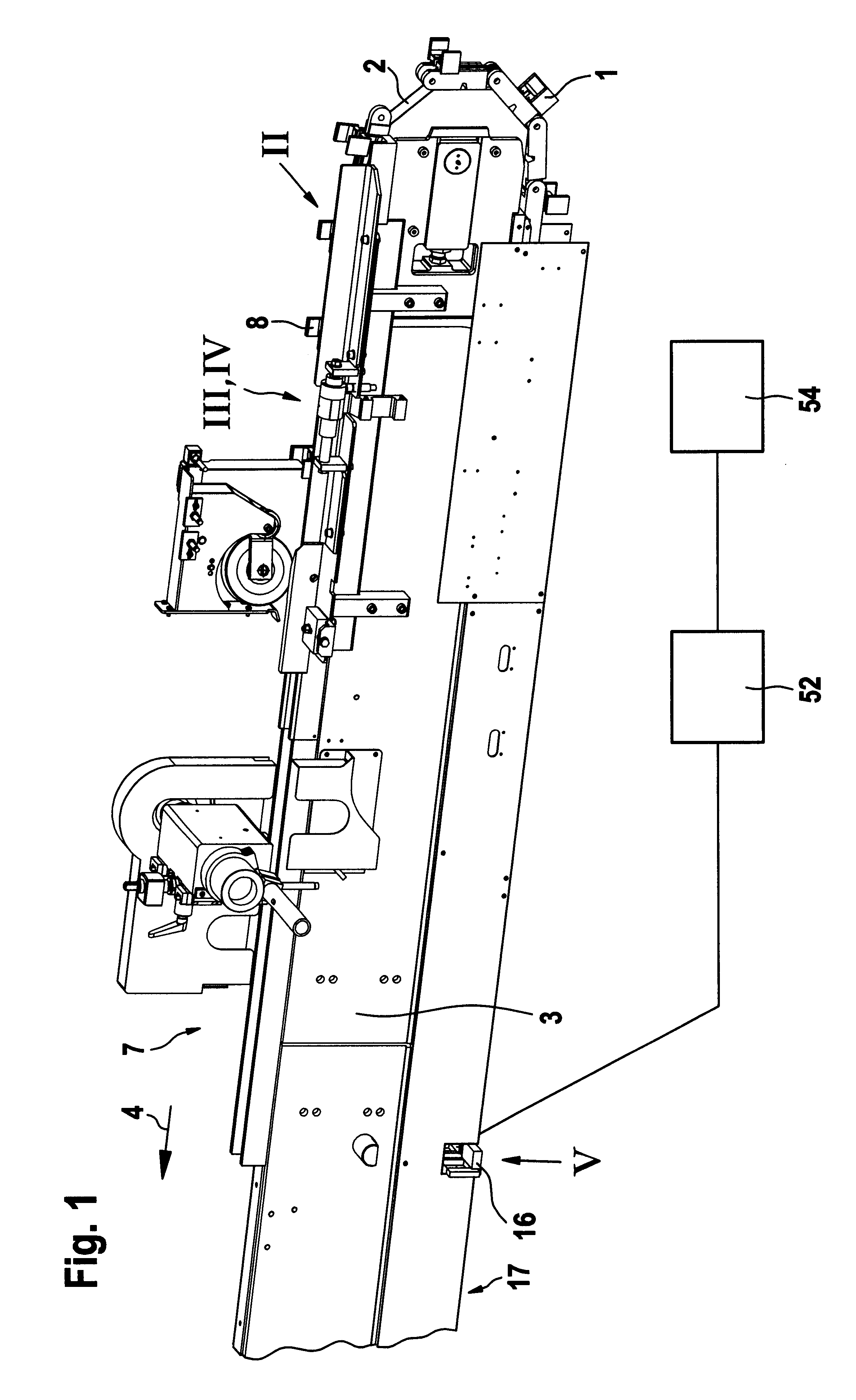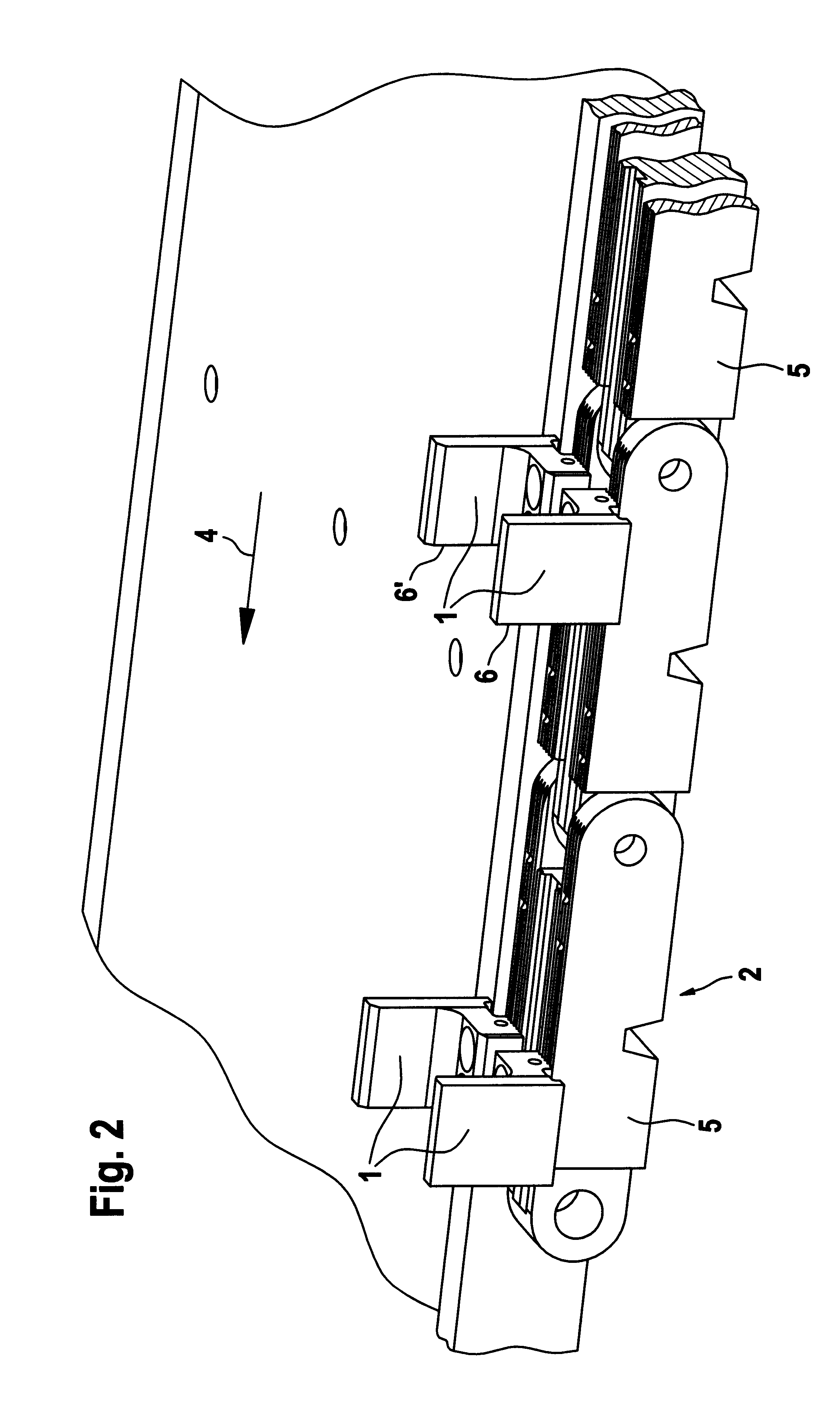Aligning and feeding device for panel-shaped workpieces
- Summary
- Abstract
- Description
- Claims
- Application Information
AI Technical Summary
Benefits of technology
Problems solved by technology
Method used
Image
Examples
Embodiment Construction
The feed chain 2 illustrated in FIG. 1 forms an element of a flat-dovetailing installation which is intended to provide the end sides of panel-shaped pieces of wood with dovetails which extend in parallel with the base plane thereof. These pieces of wood can be fitted into and connected to each other, with gluing, on the end side in the region of their dovetails for the purpose of forming straight lengths of wood. In order to preserve the linearity of these lengths of wood it is extremely important that the dovetail profile which is to be introduced on the end side has a uniform depth over the entire width of the wood, which requires the respective piece of wood to be held in a defined alignment with respect to a milling machine.
A defined alignment is afforded to the pieces of wood by the cooperation of the illustrated feed chain 2 which is equipped in each case with entrainers 1 arranged in pairs and which is disposed on a guide device 3 and can be driven in a speed-controllable ma...
PUM
| Property | Measurement | Unit |
|---|---|---|
| Speed | aaaaa | aaaaa |
Abstract
Description
Claims
Application Information
 Login to View More
Login to View More - R&D
- Intellectual Property
- Life Sciences
- Materials
- Tech Scout
- Unparalleled Data Quality
- Higher Quality Content
- 60% Fewer Hallucinations
Browse by: Latest US Patents, China's latest patents, Technical Efficacy Thesaurus, Application Domain, Technology Topic, Popular Technical Reports.
© 2025 PatSnap. All rights reserved.Legal|Privacy policy|Modern Slavery Act Transparency Statement|Sitemap|About US| Contact US: help@patsnap.com



